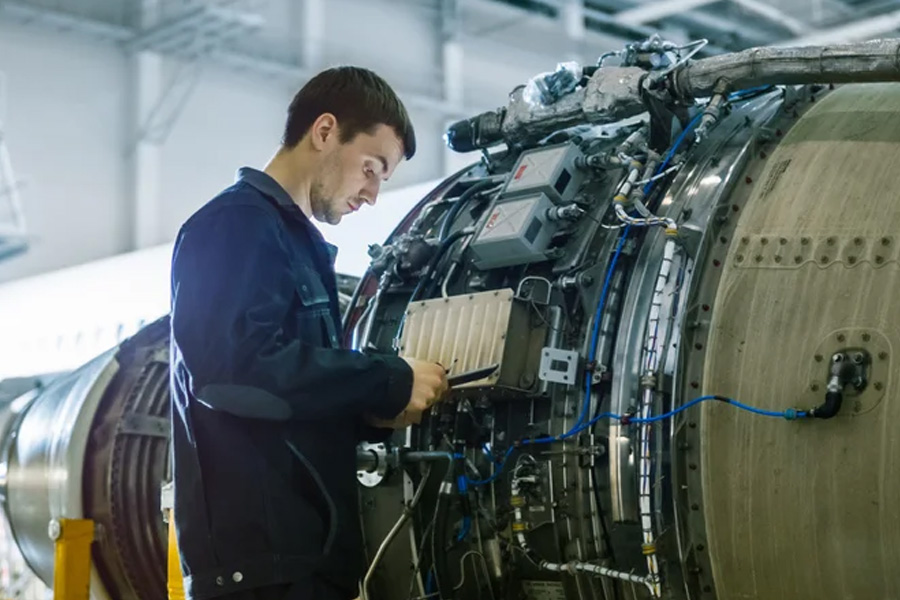Aero engineering has witnessed a remarkable evolution since the Wright Brothers’ first powered flight in 1903. From the groundbreaking innovations of the early 20th century to today’s cutting-edge aircraft technology, including advancements in Leading Edge Protection, the field of aerospace engineering has transformed dramatically. This article explores the journey of aero engineering, tracing its roots from the Wright Brothers’ historic flight to the sophisticated aircraft of the modern era.
The Dawn of Powered Flight: The Wright Brothers
The Wright Brothers, Orville and Wilbur, are often hailed as the pioneers of modern aviation. On December 17, 1903, their Wright Flyer achieved the first powered, controlled, and sustained flight. This historic flight took place at Kitty Hawk, North Carolina, and lasted just 12 seconds, covering 120 feet. The Wright Brothers’ success was not merely due to their innovative aircraft design but also their meticulous research and experimentation with aerodynamics and control mechanisms.
Their aircraft featured a lightweight design and a revolutionary control system, which included wing warping and a movable rudder. These innovations laid the foundation for future advancements in aero engineering. The Wright Flyer demonstrated that controlled flight was possible, igniting a wave of interest and investment in aviation.
The Interwar Years: Advances and Innovations
Following the Wright Brothers’ achievement, aviation technology progressed rapidly during the interwar years. The 1920s and 1930s saw significant advancements in aircraft design, materials, and engineering techniques. One notable development was the introduction of all-metal aircraft, which replaced the traditional wooden structures and fabric-covered wings.
In 1927, Charles Lindbergh’s historic solo transatlantic flight in the Spirit of St. Louis captured the world’s imagination and demonstrated the potential for long-distance air travel. The 1930s saw the development of more powerful engines and larger aircraft, such as the Boeing B-17 Flying Fortress, which played a crucial role during World War II.
World War II: Technological Breakthroughs
World War II was a period of intense innovation in aerospace engineering. The need for superior aircraft performance led to the development of advanced technologies and materials. Jet propulsion emerged as a game-changer, with the introduction of the first operational jet fighters, such as the Messerschmitt Me 262 and the Gloster Meteor.
The war also spurred advancements in radar technology, pressurized cabins, and high-performance engines. The development of the jet engine, in particular, revolutionized aviation by providing greater speed, altitude, and range compared to piston-engine aircraft. This period laid the groundwork for the post-war boom in commercial and military aviation.
The Jet Age: Commercial Aviation Takes Flight
The post-World War II era marked the beginning of the Jet Age, a period characterized by rapid advancements in commercial aviation. The introduction of jet airliners, such as the Boeing 707 and the Douglas DC-8, transformed air travel by making it faster and more accessible. These aircraft featured jet engines that enabled them to fly at higher speeds and altitudes, significantly reducing travel times.
The development of the wide-body airliner, exemplified by the Boeing 747, further revolutionized commercial aviation by allowing for larger passenger capacities and longer routes. The 747, known as the “Jumbo Jet,” became an icon of air travel and paved the way for global connectivity.
Modern Aerospace Engineering: Innovations and Challenges
Today, aerospace engineering continues to push the boundaries of technology and innovation. Modern aircraft are characterized by advanced materials, cutting-edge aerodynamics, and sophisticated avionics systems. The use of composite materials, such as carbon fiber-reinforced polymers, has reduced aircraft weight and improved fuel efficiency.
The development of fly-by-wire technology has enhanced aircraft control and safety, allowing for more precise and automated flight operations. Additionally, advancements in engine technology, such as the development of high-bypass turbofan engines, have further improved fuel efficiency and reduced environmental impact.
In recent years, the aerospace industry has also focused on sustainability and environmental challenges. The push for greener technologies has led to research in alternative fuels, hybrid-electric propulsion systems, and even fully electric aircraft. Companies like Boeing and Airbus are investing in research and development to create more eco-friendly solutions for the future of aviation.
The Future of Aero Engineering: Space Exploration and Beyond
The future of aero engineering is not limited to Earth-bound applications. Space exploration has become an increasingly important aspect of aerospace engineering, with both governmental and private entities making significant strides in space travel. The development of reusable rocket technology, spearheaded by companies like SpaceX, has the potential to reduce the cost of space access and open up new possibilities for space exploration.
Additionally, the concept of urban air mobility (UAM) is gaining traction, with the development of vertical takeoff and landing (VTOL) aircraft and air taxis. These innovations aim to address traffic congestion and provide new modes of transportation within urban environments.
Conclusion
The evolution of aero engineering from the Wright Brothers’ first flight to modern aircraft and space exploration is a testament to human ingenuity and technological progress. Each milestone in this journey has paved the way for the next, driving innovation and expanding the possibilities of flight. As we look to the future, aerospace engineering will continue to push the boundaries of what is possible, shaping the way we travel and explore our world and beyond





